
The Historic Heart of Scotland: Stirling
Discover the historic heart of Scotland in Stirling, where medieval castles, legendary battles, and stunning natural landscapes come together in a vibrant and charming city.
Stirling, often referred to as the 'Gateway to the Highlands,' is a city steeped in history and brimming with charm. Nestled between Edinburgh and Glasgow, Stirling offers a perfect blend of medieval allure and modern-day vibrancy. It is home to the iconic Stirling Castle, perched high on a craggy hill, offering panoramic views that stretch far across the Scottish landscape. The castle is not just a fortress but a treasure trove of Scottish history, with tales of William Wallace and Mary, Queen of Scots, echoing through its ancient walls. The city's historic old town is a labyrinth of cobbled streets and picturesque alleyways, where every corner tells a story. Stroll along the Stirling Bridge, where the legendary Battle of Stirling Bridge took place, or visit the Church of the Holy Rude, where James VI was crowned. Stirling's vibrant cultural scene is also worth exploring, with a host of museums, galleries, and theaters that showcase the city's rich heritage and contemporary creativity. Beyond its historic sites, Stirling is a gateway to Scotland's stunning natural beauty. The nearby Loch Lomond and The Trossachs National Park offer endless opportunities for outdoor adventures, from hiking and cycling to boating and wildlife spotting. Whether you're a history buff, an outdoor enthusiast, or simply looking to soak up the Scottish atmosphere, Stirling promises an unforgettable experience.
Local tips in Stirling
- Visit Stirling Castle early in the morning to avoid crowds and get the best photos.
- Explore the old town on foot to fully appreciate its historic charm and hidden gems.
- Take a guided tour to learn fascinating details about Stirling's rich history.
- Don't miss the Wallace Monument for breathtaking views and inspiring stories of Scotland's national hero.
- Plan a day trip to Loch Lomond and The Trossachs National Park for a taste of Scotland's natural beauty.
The Historic Heart of Scotland: Stirling
Stirling, often referred to as the 'Gateway to the Highlands,' is a city steeped in history and brimming with charm. Nestled between Edinburgh and Glasgow, Stirling offers a perfect blend of medieval allure and modern-day vibrancy. It is home to the iconic Stirling Castle, perched high on a craggy hill, offering panoramic views that stretch far across the Scottish landscape. The castle is not just a fortress but a treasure trove of Scottish history, with tales of William Wallace and Mary, Queen of Scots, echoing through its ancient walls. The city's historic old town is a labyrinth of cobbled streets and picturesque alleyways, where every corner tells a story. Stroll along the Stirling Bridge, where the legendary Battle of Stirling Bridge took place, or visit the Church of the Holy Rude, where James VI was crowned. Stirling's vibrant cultural scene is also worth exploring, with a host of museums, galleries, and theaters that showcase the city's rich heritage and contemporary creativity. Beyond its historic sites, Stirling is a gateway to Scotland's stunning natural beauty. The nearby Loch Lomond and The Trossachs National Park offer endless opportunities for outdoor adventures, from hiking and cycling to boating and wildlife spotting. Whether you're a history buff, an outdoor enthusiast, or simply looking to soak up the Scottish atmosphere, Stirling promises an unforgettable experience.
When is the best time to go to Stirling?
Iconic landmarks you can’t miss
Stirling Castle
Explore Stirling Castle, a historic gem in Scotland with stunning architecture and breathtaking views of the surrounding landscapes.

The National Wallace Monument
Discover the National Wallace Monument: a breathtaking tribute to Scotland's hero with stunning views and rich history.

Blair Drummond Safari and Adventure Park
Discover the thrill of wildlife and adventure at Blair Drummond Safari and Adventure Park, a premier family-friendly attraction in Stirling, Scotland.

The Crossed Peels
Discover the charm of The Crossed Peels, a quintessential Scottish pub in Stirling, where traditional cuisine meets warm hospitality.

The Battle of Bannockburn Visitor Centre
Discover Scotland's heritage at the Battle of Bannockburn Visitor Centre, where history and nature intertwine in a captivating cultural experience.

King's Park
Discover the natural beauty and rich history of King's Park, a serene urban oasis in Stirling perfect for relaxation and exploration.

Stirling Old Bridge
Discover the historical significance and stunning views at Stirling Old Bridge, a must-visit landmark that connects you to Scotland's past.
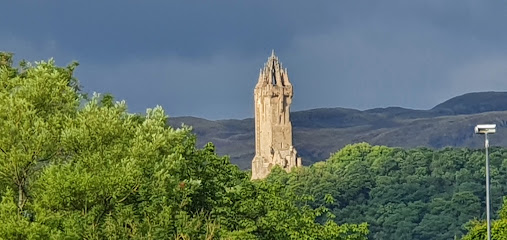
Stirling Arcade
Experience the unique blend of history and modernity at Stirling Arcade, the heart of shopping and culture in Stirling, Scotland.

Stirling Old Town Jail
Discover the fascinating history of Stirling at the Old Town Jail, a captivating attraction with stunning views and engaging tours that bring the past to life.

City Walls
Discover the charm of City Walls in Stirling, where history meets hospitality in a cozy pub atmosphere.

Monterey Jack's Stirling
Experience the best of American cuisine and vibrant cocktails at Monterey Jack's Stirling, a top dining destination in the heart of Scotland.

The Stirling Smith Art Gallery & Museum
Discover the Stirling Smith Art Gallery & Museum, where art and history converge in a captivating cultural experience in the heart of Stirling.

Cambuskenneth Abbey
Discover the medieval charm and serene beauty of Cambuskenneth Abbey, a historical landmark in Stirling, Scotland, perfect for history lovers and nature enthusiasts.

David Stirling Memorial
Discover the David Stirling Memorial in Dunblane, a tribute to Scotland's military heritage and a serene spot for reflection amidst breathtaking views.

Church of the Holy Rude
Explore the Church of the Holy Rude in Stirling, a historic church with stunning architecture and rich ties to Scotland's past.

Unmissable attractions to see
Edinburgh Castle
Explore the historic Edinburgh Castle, a majestic fortress that tells the story of Scotland's rich heritage and offers stunning views of the city.

The Kelpies
Discover The Kelpies in Falkirk, Scotland: a stunning tribute to equine heritage and a remarkable sculpture in Helix Park.
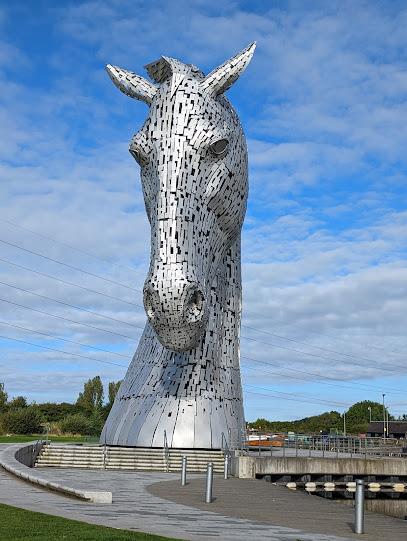
Stirling Castle
Explore the majestic Stirling Castle, a historical treasure of Scotland with breathtaking views and rich royal heritage.

Princes Street Gardens
Explore Edinburgh's urban oasis at Princes Street Gardens, a vibrant park with stunning views, floral beauty, and a rich cultural atmosphere.

Royal Botanic Garden Edinburgh
Explore the Royal Botanic Garden Edinburgh – a breathtaking botanical wonder with diverse plant species and serene landscapes in the heart of Scotland.

Kelvingrove Art Gallery and Museum
Explore the iconic Kelvingrove Art Gallery and Museum in Glasgow, a cultural gem showcasing art, history, and stunning architecture.

George Square
Experience Glasgow's vibrant culture at George Square, a historic hub of monuments and events in the heart of the city.

Riverside Museum
Explore Glasgow's Riverside Museum, where maritime history and innovative design meet in a captivating cultural experience.

Dean Village
Explore the stunning architecture and serene landscapes of Dean Village, a historic gem nestled along Edinburgh's Water of Leith.

National Galleries of Scotland: National
Explore the National Galleries of Scotland in Edinburgh, a premier destination for art lovers, featuring masterpieces from renowned artists across centuries.

Camera Obscura & World of Illusions
Explore the captivating Camera Obscura & World of Illusions in Edinburgh, where science meets magic and every corner unveils a new surprise.

Celtic Park
Experience the passion of Scottish football at Celtic Park, a cultural landmark in Glasgow that celebrates the rich history of the Celtic Football Club.

Loch Lomond & The Trossachs National Park
Explore the breathtaking landscapes and rich wildlife of Loch Lomond & The Trossachs National Park, a must-visit destination in Scotland's natural paradise.

OVO Hydro
OVO Hydro is Glasgow's leading entertainment venue, hosting exciting concerts and events that showcase the city's vibrant cultural scene.

Kelvingrove Park
Discover the beauty and tranquility of Kelvingrove Park in Glasgow, a picturesque urban oasis filled with history, culture, and vibrant nature.

Essential places to dine
No 2 Baker Street
Discover the delightful fusion of tradition and taste at No 2 Baker Street in Stirling—a must-visit pub and restaurant for every traveler.

River House Stirling
Experience modern Scottish cuisine at River House Stirling with stunning views of the River Forth.

The Birds & Bees
Experience the best of Stirling at The Birds & Bees - where local flavors meet gastropub charm in an inviting atmosphere.

Stirling Beefeater
Discover delicious steak dishes and traditional British fare at Stirling Beefeater – perfect for families and casual diners alike.

Brea - Scottish Restaurant
Discover authentic Scottish cuisine at Brea in Stirling - where local ingredients meet creative culinary artistry.

Corrieri's
Discover Corrieri's in Stirling – where authentic Italian flavors meet a cozy atmosphere for unforgettable dining experiences.

The Portcullis
Experience authentic Scottish cuisine and warm hospitality at The Portcullis in historic Stirling.

Allan Park
Discover Allan Park in Stirling: A delightful restaurant offering exquisite meals, unique cocktails, and comfortable accommodations in one beautiful location.

Molly Malones
Discover the charm of Molly Malones in Stirling - a cozy pub serving authentic Scottish dishes and local brews in a vibrant atmosphere.

Monterey Jack's Stirling
Experience the best American cuisine in Stirling at Monterey Jack's – where delicious burgers meet refreshing cocktails in a vibrant setting.
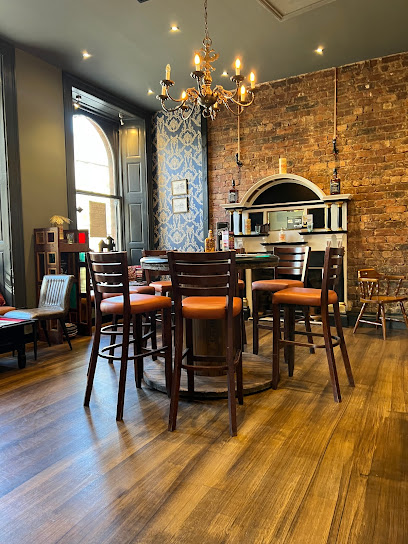
Springkerse View - Pub & Grill
Discover delicious Scottish cuisine at Springkerse View - Pub & Grill in Stirling, where warmth and flavor come together for an unforgettable dining experience.

Nicky-Tams Bar & Bothy
Discover the heart of Scottish gastronomy at Nicky-Tams Bar & Bothy in Stirling – where tradition meets modern taste.

Cold Beer Company
Discover Cold Beer Company: A Vibrant Pub Experience in Stirling with Great Food and Craft Beers.

The Hollybank
Discover the delightful flavors of British cuisine at The Hollybank in Stirling—where tradition meets modern culinary artistry.

Indian Cottage
Discover authentic Indian cuisine at Indian Cottage in Stirling – a culinary journey filled with vibrant flavors and aromatic spices.

Markets, malls and hidden boutiques
The Thistles Shopping Centre
Experience the best of shopping and dining at The Thistles Shopping Centre in Stirling, where variety meets convenience.

Primark
Explore fashionable finds at Primark in Stirling, where trendy clothing meets unbeatable prices in a vibrant shopping atmosphere.

Stirling Arcade
Experience the vibrant atmosphere of Stirling Arcade, a shopping center steeped in local culture, unique shops, and delightful eateries.

Burghmuir Retail Park
Explore Burghmuir Retail Park in Stirling, where shopping meets convenience with a variety of stores and ample parking.

Marks and Spencer
Explore Marks and Spencer in Stirling for a unique blend of quality groceries, fashionable clothing, and a taste of local shopping culture.

TK Maxx
Explore TK Maxx Stirling for unbeatable bargains on fashion, homeware, and unique finds in a vibrant shopping atmosphere.
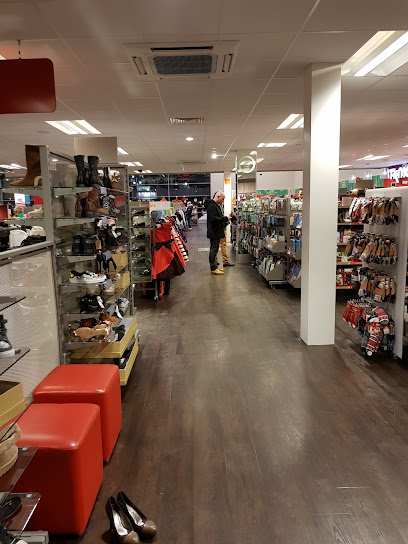
The Book Nook
Discover The Book Nook in Stirling - a delightful gift shop and café, perfect for book lovers and food enthusiasts alike.

Europa Music
Explore Europa Music in Stirling, a haven for music lovers with a vast collection of records, CDs, and a rich local musical culture.

Made In Stirling
Explore Made In Stirling for unique handmade gifts and local artwork, celebrating the creativity of Stirling's artisans.

House of Henderson
Experience the essence of Scottish tradition at the House of Henderson, your premier destination for bespoke kilts and culture in Stirling.

Tinkerbells Emporium
Explore the enchanting world of Tinkerbells Emporium in Stirling, where unique gifts and local treasures await to delight every visitor.
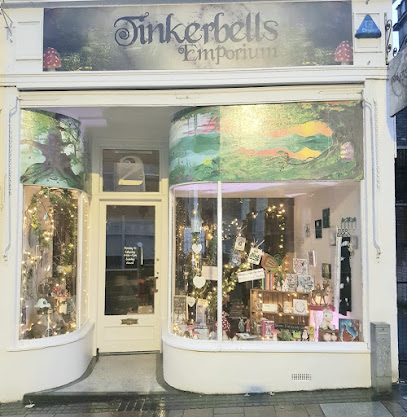
The Scottish Gantry
Discover the essence of Scottish beverages at The Scottish Gantry in Stirling Arcade, where local charm meets an impressive selection of drinks.

Tinsel & Tartan
Discover the magic of the holidays at Tinsel & Tartan, Stirling's premier Christmas shop, offering unique ornaments and festive gifts for all.

Flying Tiger Copenhagen
Explore Flying Tiger Copenhagen in Stirling for unique gifts, fun homewares, and creative supplies that delight visitors of all ages.

Contempo
Explore Contempo, Stirling's premier gift shop, featuring unique candles, jewelry, and Scottish souvenirs that make your visit unforgettable.

Essential bars & hidden hideouts
The Crossed Peels
Discover the charm of The Crossed Peels, a cozy pub in Stirling, offering local beers, hearty meals, and a warm atmosphere for all visitors.

No 2 Baker Street
Experience the essence of Scottish hospitality at No 2 Baker Street, a lively pub and restaurant in the heart of Stirling, offering delightful dishes and a warm atmosphere.

The Birds & Bees
Experience the charm of Stirling at The Birds & Bees, a gastropub offering delicious local cuisine and a warm atmosphere for all diners.
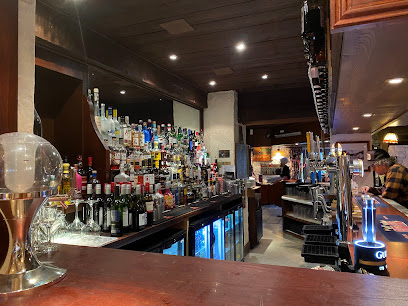
The Portcullis
Experience the heart of Scottish hospitality at The Portcullis, a charming pub and inn in the historic city of Stirling.

Molly Malones
Experience the heart of Scottish culture at Molly Malones in Stirling, where traditional pub fare meets a lively atmosphere and local charm.
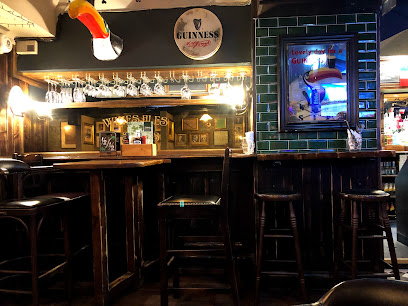
City Walls
Discover the warmth of Scottish hospitality at City Walls Pub, serving traditional cuisine and local ales in the heart of Stirling.

Nicky-Tams Bar & Bothy
Experience the warmth of Scottish hospitality at Nicky-Tams Bar & Bothy, a charming gastropub in Stirling with delicious local cuisine.

Cold Beer Company
Experience the best of Stirling at Cold Beer Company, a lively pub offering great food, drinks, and local culture in a cozy setting.

BrewDog Stirling
Experience the best of craft beer and delicious pizza in a vibrant atmosphere at BrewDog Stirling, your go-to bar in the heart of Stirling.

Settle Inn
Discover the charm of Settle Inn, a cozy bar in Stirling offering a delightful selection of drinks and a welcoming atmosphere for every visitor.

Curly Coo Bar
Discover the vibrant Curly Coo Bar in Stirling, where delightful drinks and delicious food create an unforgettable experience.
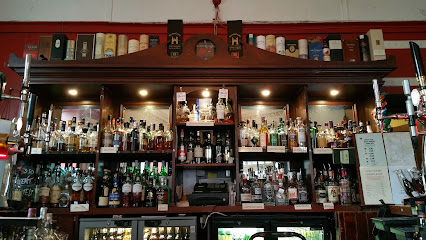
Corn Exchange
Discover the Corn Exchange Pub in Stirling: A perfect blend of traditional Scottish charm with a vibrant atmosphere and delicious food.
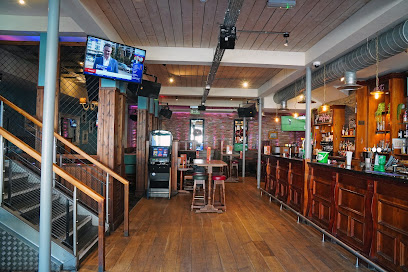
Vinney’s Bar
Experience the warm hospitality and vibrant atmosphere at Vinney's Bar in Stirling, offering affordable drinks and a welcoming ambiance.

Oscar's Wine Bar
Discover the vibrant charm of Oscar's Wine Bar in Stirling - a delightful hub for wine lovers, foodies, and live music enthusiasts.

The Borestone Bar
Experience the charm of The Borestone Bar in Stirling, a cozy pub offering local ales, delicious food, and a warm Scottish welcome.

Local Phrases
-
- HelloAye up
[aɪ ʌp] - GoodbyeCheerio
[tʃɪərɪəʊ] - YesAye
[aɪ] - NoNaw
[nɔː] - Please/You're welcomePlees/You're welcome
[pliːz/jʊər ˈwɛlkəm] - Thank youCheers
[tʃɪəz] - Excuse me/SorryExcuse me/Sorry
[ɪksˈkjuːz mi/ˈsɒri] - How are you?Hoo are ye?
[huː ɑːr jə] - Fine. And you?Fine. An' yersel'?
[faɪn. ən yərˈsɛl] - Do you speak English?Dae ye speak English?
[deɪ jə spiːk ˈɪŋɡlɪʃ] - I don't understandAh dinnae unnerstaun
[ɑː ˈdɪnɪ ˌʌndərˈstænd]
- HelloAye up
-
- I'd like to see the menu, pleaseAh'd like tae see the menu, please
[aɪd laɪk tə siː ðə ˈmɛnjuː pliːz] - I don't eat meatAh dinnae eat meat
[ɑː ˈdɪnɪ ˈiːt miːt] - Cheers!Slàinte!
[slɑːnʧə] - I would like to pay, pleaseAh wid like tae pay, please
[aɪ wʊd laɪk tə peɪ pliːz]
- I'd like to see the menu, pleaseAh'd like tae see the menu, please
-
- Help!Help!
[hɛlp] - Go away!Gae awa!
[geɪ əˈweɪ] - Call the Police!Caw the Polis!
[kɔː ðə ˈpɒlɪs] - Call a doctor!Caw a doactair!
[kɔː ə ˈdɒktər] - I'm lostAh'm awa' aff ma heid
[ɑːm əˈweɪ ʌf ma hɛd] - I'm illAh'm feeling peely-wally
[ɑːm ˈfiːlɪŋ ˈpiːli ˈwɒli]
- Help!Help!
-
- I'd like to buy...Ah'd like tae buy...
[aɪd laɪk tə baɪ] - I'm just lookingAh'm jist haein' a keek
[ɑːm ʤəst ˈheɪɪn ə kiːk] - How much is it?Hoo much is it?
[huː mʌtʃ ɪz ɪt] - That's too expensiveThat's ower dear
[ðæts aʊər dɪər] - Can you lower the price?Can ye gie's a better price?
[kæn jə gɪz ə ˈbɛtər praɪs]
- I'd like to buy...Ah'd like tae buy...
-
- What time is it?Whit time is it?
[ʍɪt taɪm ɪz ɪt] - It's one o'clockIt's yin o'clock
[ɪts jɪn əˈklɒk] - Half past (10)Hauf past (10)
[hɑːf pɑːst (10)] - MorningMornin'
[ˈmɔːnɪn] - AfternoonEfternoon
[ˈeftənʊn] - EveningGloamin'
[ˈgləʊmɪn] - YesterdayYestreen
[ˈjɛstrin] - TodayThe day
[ðə dɛɪ] - TomorrowThe morn
[ðə mɔːrn] - 1Ane
[eɪn] - 2Twa
[twɑː] - 3Three
[θriː] - 4Fower
[ˈfɔːr] - 5Five
[faɪv] - 6Sax
[sæks] - 7Seiven
[ˈsɛvən] - 8Aicht
[eɪtʃt] - 9Nine
[naɪn] - 10Ten
[tɛn]
- What time is it?Whit time is it?
-
- Where's a/the...?Whaur's a/the...?
[ʍɛərz əðiː] - What's the address?Whit's the address?
[ʍɪts ðiː əˈdrɛs] - Can you show me (on the map)?Can ye show me (on the map)?
[kæn jə ʃoʊ miː (ɒn ðə mæp)] - When's the next (bus)?Whit time's the next (bus)?
[ʍɪt taɪmz ðiː nɛkst (bʌs)] - A ticket (to ....)A ticket (tae ....)
[eɪ ˈtɪkɪt (teɪ ....)]
- Where's a/the...?Whaur's a/the...?
History of Stirling
-
The Battle of Stirling Bridge, fought on September 11, 1297, was a significant victory for the Scottish forces led by William Wallace and Andrew Moray against the English army. The battle took place near the River Forth and marked a turning point in the First War of Scottish Independence. Wallace and Moray's strategic use of the narrow bridge to counter the larger English force demonstrated their tactical ingenuity and boosted Scottish morale.
-
Stirling Castle, one of Scotland's grandest castles, has been a key royal residence and military stronghold. The castle's strategic location on a volcanic crag provided a defensive advantage and control over the main route between the Highlands and the Lowlands. It has witnessed numerous historical events, including the coronation of Mary, Queen of Scots in 1543. The castle's architecture showcases a blend of Gothic, Renaissance, and Baroque styles, reflecting its evolving role through the centuries.
-
Fought on June 23-24, 1314, the Battle of Bannockburn was a decisive Scottish victory in the First War of Scottish Independence. King Robert the Bruce led the Scottish forces to triumph over the English army commanded by King Edward II. The battle took place near Stirling and solidified Bruce's position as a national hero and a unifying figure in Scotland. The victory at Bannockburn secured Scottish independence for the next several decades.
-
The Stirling Heads are a series of beautifully carved oak medallions that once adorned the ceilings of Stirling Castle. Created in the 16th century, these intricate pieces feature portraits of kings, queens, courtiers, and mythological figures. The Stirling Heads highlight the Renaissance influence on Scottish art and the cultural exchange between Scotland and Europe during this period. Today, they are considered valuable artifacts of Scottish heritage.
-
During the 17th century, Stirling played a significant role in the Covenanting Wars, a series of conflicts centered around religious and political disputes in Scotland. Stirling Castle served as a stronghold for the Covenanters, who opposed the attempts by King Charles I to impose Anglican practices on the Scottish Church. The town and castle endured several sieges and battles during this tumultuous period, illustrating Stirling's strategic importance.
-
The Stirling Tolbooth, built in the late 17th century, served as the administrative and judicial center of Stirling. The building housed the town council, courtrooms, and a jail. The Tolbooth is an excellent example of Scottish civic architecture from the period and today functions as a cultural center, hosting various events and exhibitions that celebrate Stirling's rich historical and cultural heritage.
-
The National Wallace Monument, completed in 1869, stands on the Abbey Craig hill overlooking Stirling. This iconic tower commemorates Sir William Wallace, a key figure in Scotland's struggle for independence. The monument features a series of galleries that tell the story of Wallace's life and achievements, including his victory at the Battle of Stirling Bridge. The monument's commanding position offers panoramic views of the surrounding landscape, adding to its significance as a symbol of national pride.
Stirling Essentials
-
Stirling is centrally located in Scotland, making it easily accessible from various parts of the United Kingdom. The nearest airport is Edinburgh Airport, roughly 30 miles away, which offers numerous domestic and international flights. From Edinburgh, you can take a direct train or bus to Stirling. Glasgow Airport is another option, situated about 40 miles away, with similar transport links. If you prefer traveling by train, Stirling has its own railway station with frequent services from major cities like Edinburgh, Glasgow, and Aberdeen. For those driving, Stirling is well-connected by the M9 motorway.
-
Stirling has a reliable and extensive public transportation system. Buses operated by companies such as First Scotland East and Stagecoach provide comprehensive coverage of the city and surrounding areas. The city's compact size makes it ideal for walking or cycling. Taxis are readily available and can be hailed on the street or booked in advance. For those wishing to explore the surrounding countryside, car rental services are available. The city's train station offers connections to other Scottish cities and towns, making day trips easy and convenient.
-
The official currency in Stirling, as in the rest of the United Kingdom, is the British Pound Sterling (GBP). Credit and debit cards are widely accepted in most shops, restaurants, and hotels. Contactless payment methods are also popular. ATMs are plentiful throughout the city, but it's advisable to carry some cash for smaller transactions or in case you visit establishments that don't accept cards. Currency exchange services are available at banks and dedicated exchange offices.
-
Stirling is generally considered a safe city for tourists. However, like any urban area, it is wise to remain vigilant, especially in crowded places. The city centre and tourist attractions are well-patrolled, but it's best to avoid walking alone at night in less populated areas such as the Raploch neighbourhood. Keep your belongings secure and be aware of your surroundings to minimize the risk of petty theft.
-
In case of an emergency, dial 999 for immediate assistance from police, fire, or medical services. Stirling Royal Infirmary is the main hospital offering emergency medical care. Pharmacies are available throughout the city for minor health concerns. It's recommended to have travel insurance that covers medical emergencies. For non-emergency issues, the local police station is located on St. Ninians Road.
-
Fashion: Do dress in layers, as Scottish weather can be unpredictable. Avoid overly casual attire when dining in upscale restaurants. Religion: Do respect local customs when visiting religious sites. Remove your hat and speak softly in places of worship. Public Transport: Do be courteous and give up your seat for elderly or disabled passengers. Don't eat or drink on buses and trains. Greetings: Do greet people with a handshake. A friendly 'hello' is always appreciated. Eating & Drinking: Do try local dishes such as haggis and shortbread. Don't tip excessively; a 10-15% gratuity is standard in restaurants.
-
To experience Stirling like a local, take a stroll through the historic Old Town and visit the Stirling Farmers' Market held on the second Saturday of each month. Engage with locals at traditional pubs like The Settle Inn, one of the oldest in Stirling. Don't miss the opportunity to hike up to the Wallace Monument for panoramic views of the city and surrounding countryside. For a quieter experience, explore the hidden gem of Cambuskenneth Abbey, located just outside the city centre.
Trending Landmark in Stirling
-
Stirling Castle
-
The National Wallace Monument
-
Blair Drummond Safari and Adventure Park
-
The Crossed Peels
-
The Battle of Bannockburn Visitor Centre
-
King's Park
-
Stirling Old Bridge
-
Stirling Arcade
-
Stirling Old Town Jail
-
City Walls
-
Monterey Jack's Stirling
-
The Stirling Smith Art Gallery & Museum
-
Cambuskenneth Abbey
-
David Stirling Memorial
-
Church of the Holy Rude
Nearby Cities to Stirling
-
Things To Do in Glasgow
-
Things To Do in Edinburgh
-
Things To Do in Dundee
-
Things To Do in Inverness
-
Things To Do in Aberdeen
-
Things To Do in Newcastle upon Tyne
-
Things To Do in Ramsey
-
Things To Do in Kirk Michael
-
Things To Do in Durham
-
Things To Do in Belfast
-
Things To Do in Laxey
-
Things To Do in Peel
-
Things To Do in Onchan
-
Things To Do in Douglas
-
Things To Do in Ballasalla











